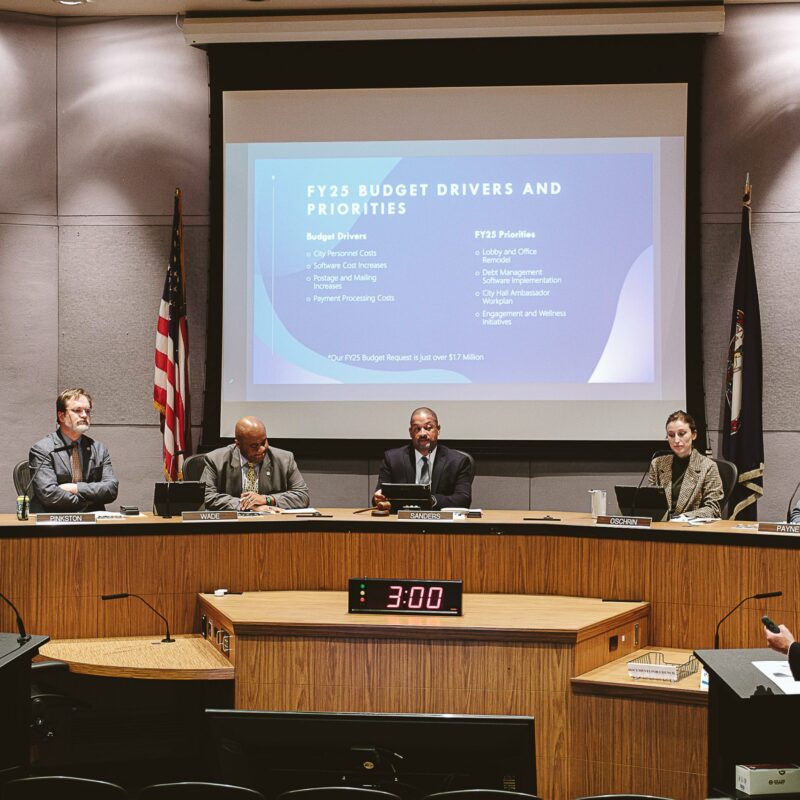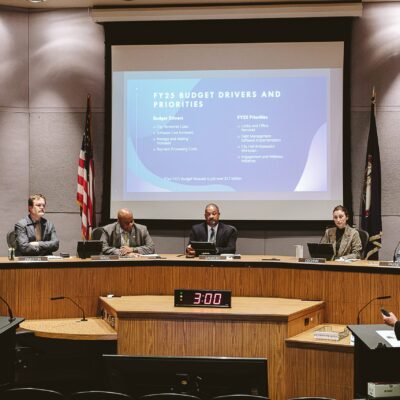Tailgating is encouraged. Alcohol consumption is evident. Scoring is at a premium.
A University of Virginia football game? Nope, the Cavs are on a bye week. The crowd that has turned out on this unseasonably warm autumn afternoon is here to watch polo and drink wine, courtesy of the King Family Vineyards in Crozet.
/2011_09_10_Polo_0752.jpg) |
Ask me what I knew of this rarified equestrian contest before I came out to the Roseland Polo grounds on this sunny, 78 degree day in early October and my honest answer would have been: Pretty Woman. In the 1990 film, snooty Los Angeles types ostracize Julia Roberts’ title character in spite of her fabulous hat and stunning sundress. The scene paints an image of intolerant class warriors with more money than sense.
At the vineyard, the vibe is considerably more welcoming. Big sunglasses, floppy hats and elegant frocks coexist quite happily with t-shirts and flip-flops. Children are everywhere, dashing through new-mown grass or staring upward in awe at the riders who circle the outside edge of the playing surface, offering smiles and greetings to the picnicking spectators.
“We can jump the boards during play, so if we get close, watch the kids,” said one helmeted competitor in a soft Southern accent. “That’s the only safety briefing we have.” The polo grounds form a broad oval, with black painted two-by-fours placed on edge, lengthwise to mark the boundaries of the field. Around that is a close-cropped track a few yards wide. Visitors to the polo grounds have backed vehicles—including some gorgeous vintage rides—onto the grassy area beyond this no-man’s-land and set up folding chairs, tents and blankets, leaving plenty of room for leisure at a safe distance from the action.
Members of the Charlottesville Polo Club, decked out in red shirts with white side panels, represent the King Family. Visitors from the Kazi Investment Group polo team take the field in pink and black. There is a referee on horseback, easily distinguished by her striped garb. Each end of the oval is marked by a pair of tall wicker pylons that serve as goalposts. The objective is simple: drive the ball through, and score a point for your team.
When the action is on the far end of the field, it looks graceful and balletic—all dashing runs, sweeping arcs of the mallet and a bounding white sphere. When a run comes down the boards right in front of my family, it’s another thing entirely—thundering adrenaline, muscle and sweat. Clods of turf fly up as a ruck of beasts and men battle for a good angle on the ball. The horses must make sharp cuts in traffic and respond to their riders with near-psychic alacrity. Man and mount have to be in complete harmony, or the insanely tricky act of hitting ball with stick at high speed will end in disaster.
The game is split into periods called chukkers, with a long halftime break. As spectators are invited onto the field for the traditional Divot Stomp, I visit with the players.
Rider L.J. Lopez is toweling his face, and his mount is cropping grass nearby while a woman in a blue Virginia Polo shirt sluices water down the horse’s sides. The speed of the game takes its greatest toll on the horses. They come in heavily lathered at the end of each chukker to be unsaddled and cared for immediately. Each rider teams up with four to six equine athletes to ensure that mounts have time to rest and recover.
“The typical polo horse becomes acclimated to the top levels of polo at age 7 or 8,” Lopez informs me. “Think about the Kentucky Derby, where the horses are in their prime at 3 years old. There’s several more years of training.”
Polo horses are American Thoroughbreds, but they must do more than run very fast in a straight line. Lopez says modern polo mounts are carefully selected for top end speed and agility, as well as the crucial mental makeup that allows them to compete in close proximity with other horses. Many are former racers, specially trained to continue their athletic careers in a different arena.
The human players often follow a similar path, from other equestrian events to competitive polo. “I don’t care if you can hit the ball a mile,” Lopez said. “It doesn’t matter if you can’t get your horse to the ball to make a play on it.” Hand-eye coordination is also key for the human athletes, who must strike the ball at top speed of roughly 25 miles per hour.
The mallets wielded by each player are marvelous throwbacks. The long handles are made of a rattan material known as manau cane. A leather grip and wrist strap attach to the rider, and the business end of the mallet is made of a dense wood called tipa.
These simple materials attest to the worldwide embrace of the sport—tipa trees grow in the horseman’s paradise of Argentina, while manau cane is of Asian provenance. The game traces its roots to ancient Persia, where it was born as a cavalry training exercise, but the sport has long welcomed female players. Persian accounts make reference to a queen and her ladies battling king’s men in the 5th century A.D. Virginia Polo—coached by L.J.’s father Lou Lopez—fields men’s and women’s club teams at UVA, with matches and tournaments scheduled through the end of November.
I return to find that my wife has bought polo-themed baseball caps and a chilled bottle of the cleverly-named Crose’ wine from the golf cart that circles the track. ABC rules allow spectators at the event to drink wines purchased on the premises—no outside alcohol of any type—and seasoned attendees are prepared with buckets of ice, picnic lunches and portable awnings, making it a perfect social event.
The rhythms of the game are more evident to my eye in the second half. The horses display their speed in long runs down the center of the field, with the ball often flying far ahead of the pack. As one long shot rolls wide and short of the goalposts, a Kazi player and his mount exhibit the full range of the game’s physicality—sprinting to the ball, cutting a turn and striking the sphere so it slices back toward the goal for a point.
The game is close, ending 5-4 in favor of the riders in red. Competitors from both teams ride the perimeter a last time, thanking fans for turning out. Some pack up and head out, but others stay put, enjoying the smell of cut grass, the rush of a well-played match and the last sunny days of October.—Eric Angevine





